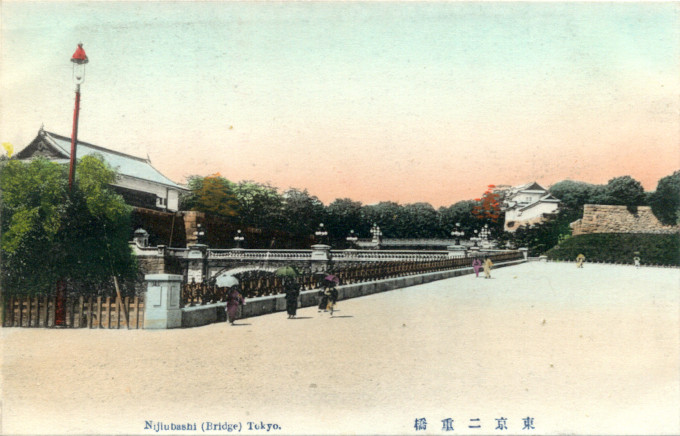
Nijubashi Bridge, Imperial Palace, c. 1910. Often referred to as a single landmark, “Nijubashi” is actually two separate bridges: Meganebashi, in the foreground; Nijubashi, in the distance. At left is the Seimon gate onto the palace grounds. The Fushimi tower rises above the tree line at right.
See also:
Imperial Palace Gates, c. 1905
From the wiki: “Looked on from the front, it can appear that a single two-storied span across the palace moat connects the grounds of the Inner Sakuradamon with the main Seimon when, in fact, it is two bridges leading over the moats. The bridges, once wooden and arched, were replaced with modern stone and iron cast structures in the Meiji era. The bridges were once buffered by gates on both ends, of which only the Nishinomaru-mon has survived, which is the main gate to today’s Imperial Palace.
“After their replacement in the Meiji era, the pair of bridges are now formally called the ‘Imperial Palace Main Gate Stone Bridge’ and the ‘Imperial Palace Main Gate Iron Bridge’. The iron bridge is also more colloquially known as Nijūbashi (literally ‘double bridge’), because the original wooden structure was built atop an auxiliary bridge due to the deepness of the moat. The stone bridge, the one seen in the foreground, is also called Meganebashi (literally ‘spectacle bridge’) because of its similarity in appearance to a half-submerged pair of eyeglasses. Collectively, both bridges are often (and mistakenly) referred to as ‘Nijūbashi’.
“Nijubashi bridge is only opened on special occasions – for official state guests, and other formal ceremonies at the Imperial Palace. Also, twice each year, the gate is open to the East Plaza of the palace grounds. The first occasions is on the January 2nd, when people are allowed in to give their New Years greetings to the Emperor and his family; the other occasion is on the 23rd of December, the Emperor’s birthday.”

“Nijubashi at Imperial Palace,” c. 1910. View from a certain angle, the positioning of the two bridges creates an optical illusion placing one on top of the other.
- Sei-mon & Meganebashi, c. 1910, with Fushimi tower in the distance.
- Sei-mon, c. 1910.
- An aerial view of Sakuradamon, Seimon, and the two bridges collectively known as “Nijubashi”, c. 1960.


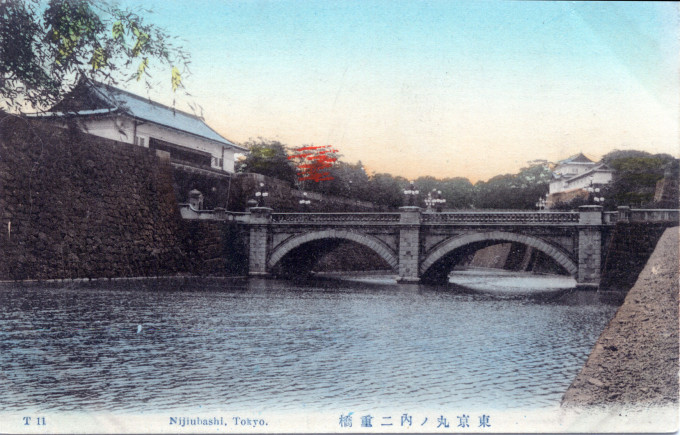
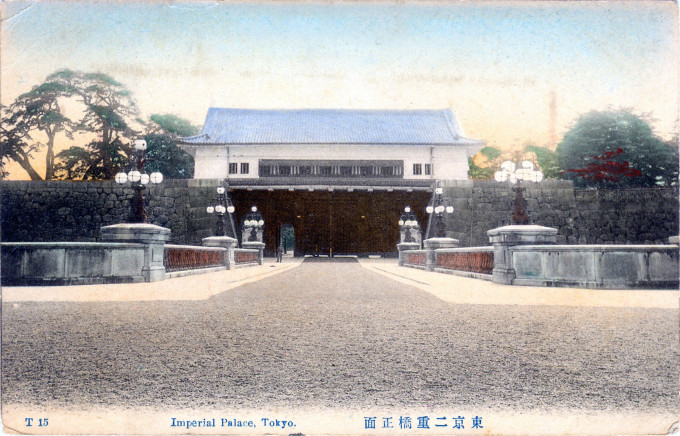
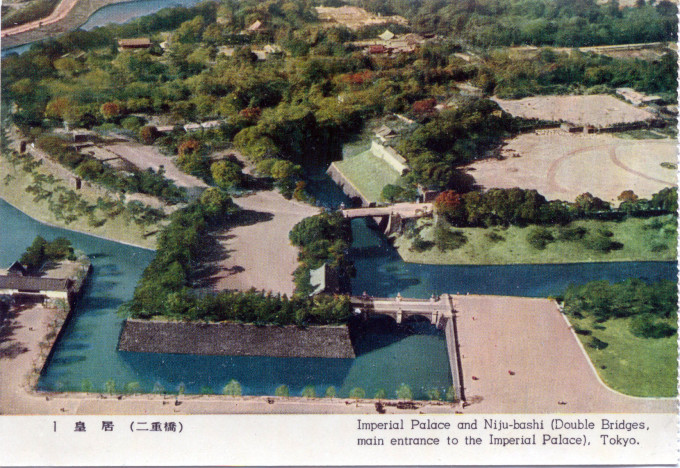
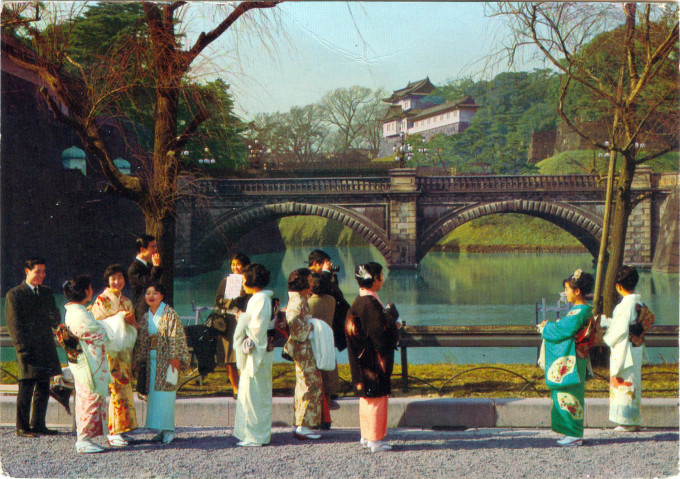
Pingback: Imperial Palace Gates, c. 1905. | Old Tokyo